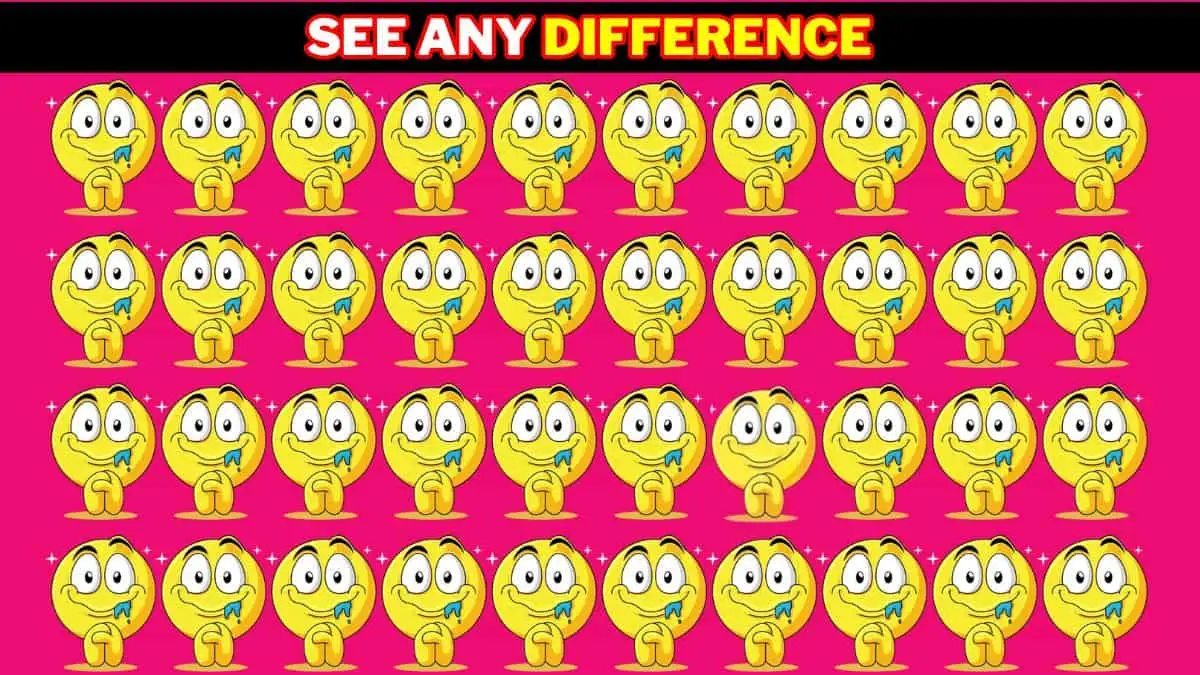Optical Illusion IQ Test: Can You Spot The Odd One Out In This Emoji Puzzle Within 7 Seconds?
by Sangeetha
Updated Feb 22, 2024

Optical Illusion
Optical illusions are captivating visual phenomena that play tricks on our perception, challenging the way we interpret the world around us. These illusions exploit the brain's tendency to make assumptions based on limited information, leading us to see things that may not align with reality.
Through clever manipulation of colors, shapes, and patterns, optical illusions create illusions of motion, distortion, or even hidden images. Artists and psychologists alike have explored the fascinating realm of optical illusions, using them as tools for artistic expression and scientific study.
One common type of optical illusion is the ambiguous figure, where the brain oscillates between multiple interpretations of the same image. Another intriguing category includes illusions that defy our sense of proportion, making objects appear larger or smaller than they actually are.
Optical illusions remind us of the complex interplay between our visual perception and the brain's cognitive processes. As we encounter these mesmerizing illusions, they prompt us to question the reliability of our senses and marvel at the intricacies of how our brains interpret the visual world.
Optical Illusion IQ Test: Can You Spot The Odd One Out In This Emoji Puzzle Within 7 Seconds?
In this Optical Illusion IQ Test, your task is to identify the odd one out among a set of emojis within a challenging 7-second time frame. The human brain often relies on pattern recognition, and this test aims to assess how quickly and accurately you can discern subtle differences.
Emojis, being simple yet distinct, present a visually stimulating puzzle. Look closely at each emoji, paying attention to details such as shape, color, and orientation. The odd one out may deviate in any of these aspects, requiring a sharp eye to differentiate.
Ready to put your visual acuity to the test? Challenge yourself and see if you can spot the unique emoji in just 7 seconds!

Optical Illusion IQ Test: Can You Spot The Odd One Out In This Emoji Puzzle Within 7 Seconds? - Solution
In this Optical Illusion IQ Test, the challenge was to spot the odd one out among a set of emojis within a brief 7-second timeframe. The solution lies in carefully observing the details of each emoji to identify the one that deviates from the rest.
In this particular puzzle, the odd one out is the emoji that differs either in shape, color, or orientation. The key to success is a keen eye for detail. The solution may vary depending on the specific puzzle presented, so it's essential to stay observant.
If you managed to identify the unique emoji within the given time, congratulations on your keen visual perception! If not, don't worry – these optical illusions are designed to challenge and entertain, providing a fun way to engage your cognitive abilities.
Ready for the next visual puzzle? Keep testing your skills and enjoy the intriguing world of optical illusions!

Optical Illusion IQ Test: Can You Spot The Odd One Out In This Emoji Puzzle Within 7 Seconds? - FAQs
Optical illusions can be classified into optical, auditory, and tactile illusions.
It can be explained as the misrepresentation or the interpretation that contradicts the objective from the actual scenario.





